Types of Bow Designs Used For Ships
Think of the most beautiful ship you might have ever seen, imagined, or let’s say the one which happened to capture your imagination the most.
It goes to say without mention that one feature of ships which never ceases to fascinate is – The Bow.
The foremost part of the ship is part aesthetics and part science. Your ship travels in a medium that provides considerable drag as compared to air.
Now, this requires the design to be such that the components of ship resistance are kept less. Especially, in the case of ships with fuller forms, components of Wave Breaking Resistance become significant, while ships with a slender and a more curved form have less Wave Making Resistance.
Fortunately, these can be controlled by how the water and waves interact with the ship at entry at the fore-end. The ship bow is where the fore part of the ship first comes in contact with the water as far as your design waterline is considered.
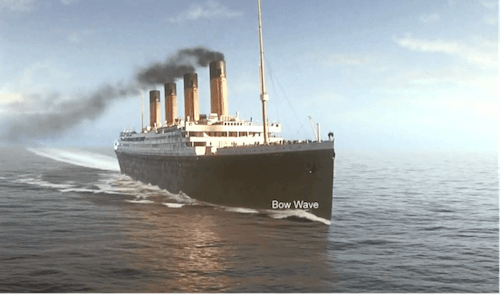
Looking at the different Ship Bow Designs in existence today, it seems that most of the shapes possible and a combination of two or more of them have been tried out.
However, newer designs have emerged and older lesser-used designs have often been tried out with certain changes after extensive analysis.
Still, broadly speaking, some of the bow design types are:
- The Bulbous Bow
- A Normal Bow without a Bulb
- Other Special Bows
The Plumb, the Clipper and the Spoon
A normal bow, as what we would call it, has developed from its predecessor which was a vertical bow. The angle at which the ship stem makes with the waterline is called the rake.
A vertical, or unraked bow having a straight edge is known as a plumb bow. These bows have maximum waterline besides an X-Bow or an Inverted Bow. This length of the waterline allows for a greater hull speed.
Bow rakes are used in conjunction with flares (Remember I mentioned imagining your ship? I guess you won’t forget the outward stretching hull form at the top, this is what we call flaring).
Flaring has its own benefits like keeping water off the decks and also eases the pitching motions. Some raking also sets up what is called ‘Crumple Zones’ allowing safety against collisions before the submerged portion comes in contact with it.
Stability-wise, it raises the Centre of Buoyancy, which in turn increases the GM – one of the pillars of ship stability. Traditionally these have been called the Clippers.
As the name suggests, a Spoon Bow resembles a spoon by giving a concave appearance at the stem and deck line.
These forms often have chining and curvature at the waterline creating their characteristic wake pattern, bringing Wave Making Resistance into the picture.
Bulbous Bow
A very familiar unit in bow sections of almost all seagoing cargo ships and vessels with fuller forms is –The Bulbous Bow.
This staple of ship designs today was said to have been discovered rather than being invented. Military towing tests in the USA showed that for a boat model having a torpedo discharge pipe extending forward also lowered the resistance. The first civil ships were seen in the 1930s.
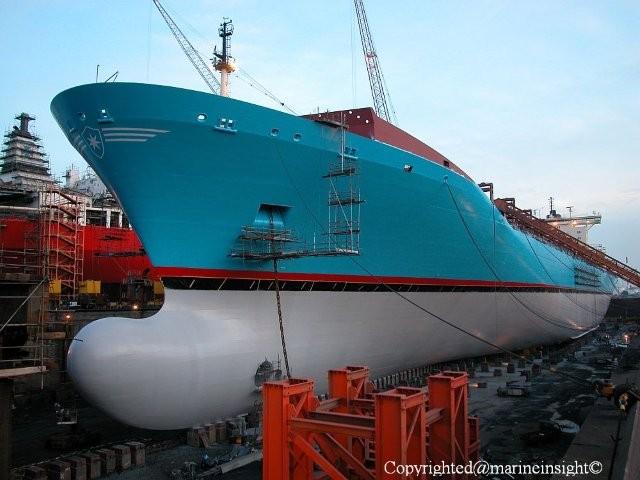
Bulbous Bows are studied using their own form characteristics and these might spring up in your ship resistance and powering calculations so you might want to consider some of them like the shape of the section, area ratios, length of the projection and the like.
The Bulbous Bow can reduce slamming on your ship and have the same effect as a normal bow in a ballasted condition if a sharply tapering bulb section is used.
Depending upon your ship form as mentioned above, the Bulb axis is also important as it affects your wave influence at entry, and if you keep your axis such that it slopes downwards stern, it will allow better flow characteristics.
Ships with fuller forms have high wave breaking resistance, and this element that eats away your propulsive efficiency can be greatly reduced by using a Bulbous Bow with a sharply downward tapering water-plane.
These Bows also allow better recovery of energy by the propeller as energy losses due to vortices at the fore-end is minimised.
Parabolic and Cylindrical Bows
Sometimes designers consider designing vessels with ‘blunt’ stems as opposed to the sharp nature of the bow section. Here is the Parabolic Bow, which resembles the mathematical curve, the Parabola.
Now, recall some high school math, the semi-minor axis of the ellipse is what would be the beam of the ship.
Sometimes only designing a parabolic shape for a ship hull is not enough, you have to see the flow around the hull and for this, give it a typical rounded form like a normal round bilged hull.
Parabolic Bows may be combined with Bulbs to take the Wave Breaking Resistance into account as these are popular in fuller form designs and are being used in Bulk Carriers today.
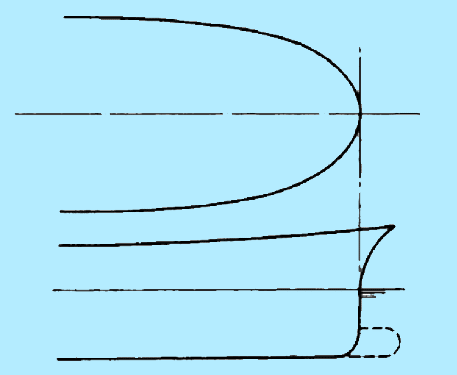
The closest cousin to these is the cylindrical ship bows which are also designed for fuller forms at design waterlines and are ideal for use in fully loaded conditions.
The Cylindrical Bows can have minimal Wave Making Resistance if designed with proper attention to the bluntness of form and stem edge at different drafts.
The Axe Bow
While an axe does its job, cutting wood, or maybe something as obvious, the ship bow bearing resemblance to it has its own characteristic features.
This design usually has a vertical stem line coupled with a long, deep and narrow fore portion of the hull, somewhat like an axe.
This shape allows it to cut through the water, allowing it to pass easily through waves with less pitching as opposed to a normal bow.
The lower portion of the fore-end of the hull, called the forefoot rarely emerges out of the water and hence the vessel is less susceptible to slamming also.
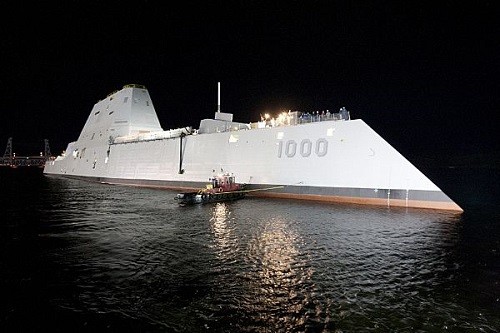
On the other side, certain manoeuvring aspects need to be taken to account, a vessel with an Axe Bow requires more rudder motion as is confirmed by the study of its hydrodynamic parameters.
X-Bow: The Generation of Inverted Bows
How about a design where your ship’s bow and almost a greater part of the hull appears upside down in comparison to a normal round bilge hull or any of the hull shapes you generally see on ships? The inverted bow is a success story among the revival of technologies that became obsolete in a different era.
These hull forms have the advantage of allowing maximum length waterline for ships of comparable sizes which means the highest possible hull speeds.
Like the Axe Bow, these bows have less spray of water at entry and also have less pitching motions and slamming reduction is quite significant. This creates quite a comfortable experience for the crew.
The fuel consumption is also reduced by a significant factor and this bow can operate quite efficiently in medium-sized wave ranges mainly because of the larger part of the ship volume being above and upfront, directly impacted upon by the waves.
These hull forms also double up as decks with accommodation space for the personnel. However, the applicability of these designs for the same level of improvement in speed losses in the roughest of seas must be an area of ongoing work.
Keeping that aside, these vessels have been applied to various applications like the AHTS (Anchor Handling Tug Supply) vessels, Seismic Vessels, Offshore and Pipelay Vessels, drillships and the likes.
These are the most commonly used ship Bow Designs today. Most probably, any vessel you see out there will have any one of the designs you just read about.
Do you know some more salient features of the different Bow Designs in practice today?
Let us know more in the comments below.
Do you have info to share with us ? Suggest a correction
Latest Naval Arch Articles You Would Like:
Subscribe To Our Newsletters
By subscribing, you agree to our Privacy Policy and may receive occasional deal communications; you can unsubscribe anytime.







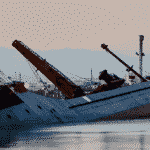

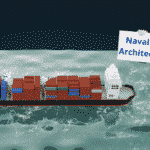
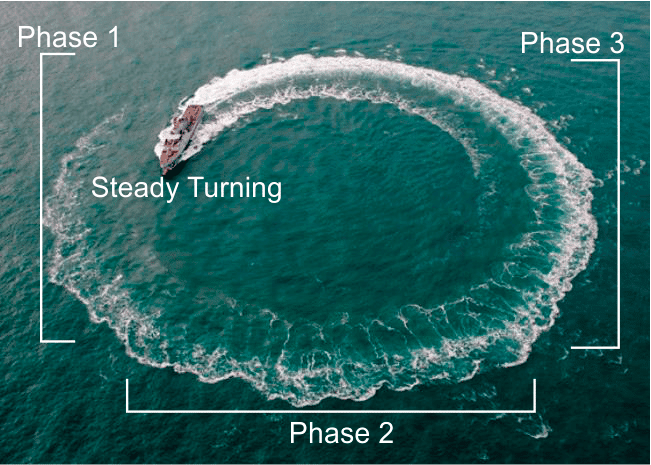
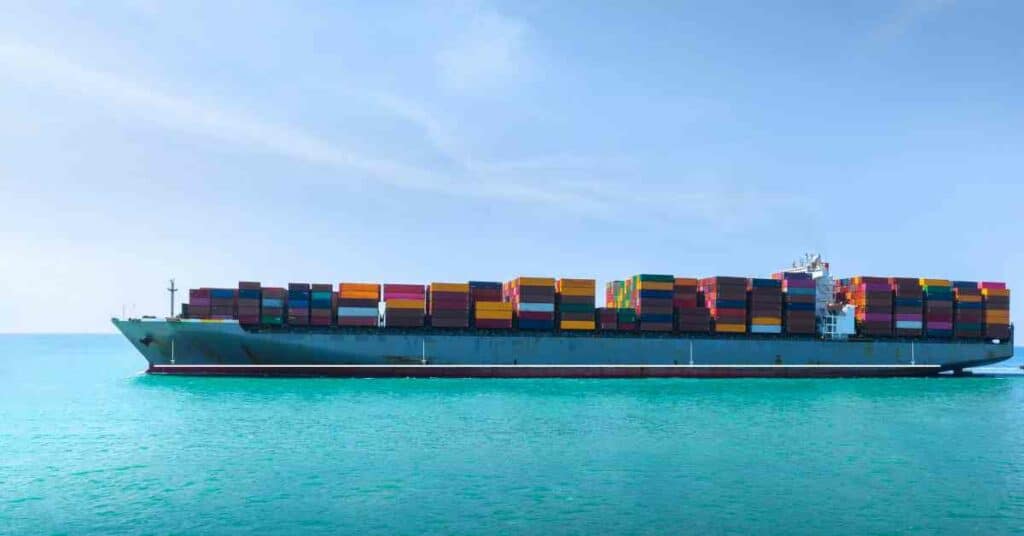

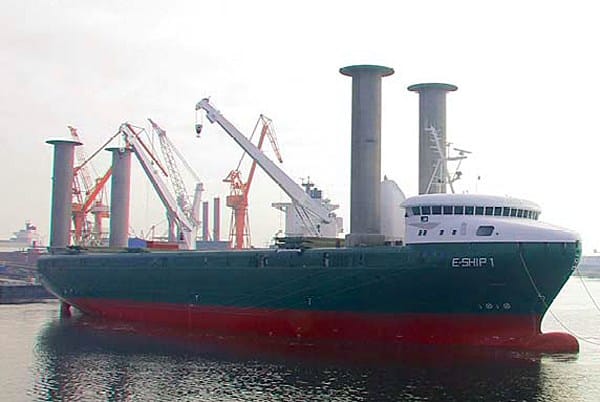
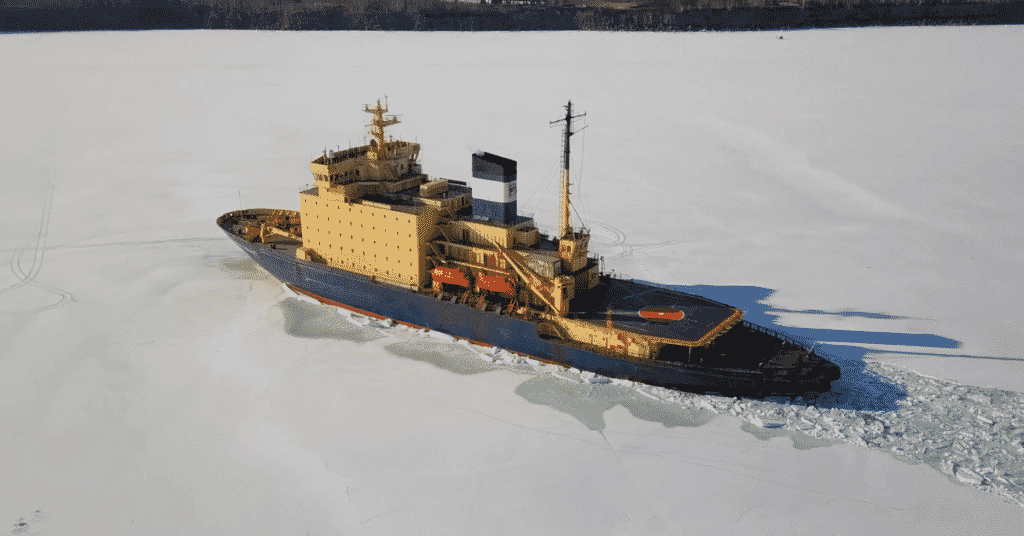
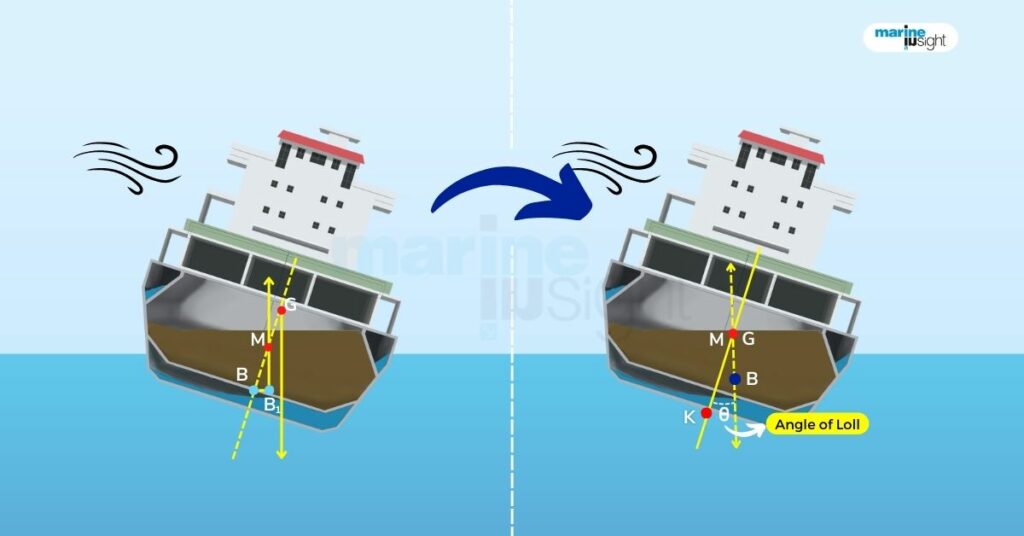
I like the X-BOW, it gives the Bridge Crew better Forward Visibility. Not having to Second-Guess what’s sitting 600 to 900-feet in front of you. It looks Strange, but I can live with Strange…
what is the name for the hood or cover over the foredeck area used to shed water. Not talking about a breakwater, but a large metal roof.
How about Vard’s bows? They are pretty cool i think
“However the applicability of these designs for the same level of improvement in speed losses in the roughest of seas must be an area of ongoing work” -nope it NOT true! -all X-bow’s have higher speed in higher wakes since they do not Pitch very much! -the famous YOUTUBE clip shows Bourbon Orca sails form two conventional designed PV’s!(https://www.youtube.com/watch?v=-YrSi5Pf_l8). -So to lower speed and they need more ongoing work at ULSTEIN… -Its pretty perfect design… It breaks the wakes behind the bow and its a stronger structure hull design -can take much higher shear loads! -they have life span expectation of 40 years in the North Sea alone! -and inspirations came from the Oseberg Viking ship and Viking Naval architects likely got their inspirations from watching Sea Birds -like Ducks or Swans -they ride waves pretty good!!
And first REALLY clear designed with a”Torpedo bulbous Bow” was the Japanese Imperial Navy “Yamato class” -and its first of all about reducing the aft wake or drag! -then comes the other benefits, but the first for purpose designed”wake reduction bow” where design just before WW1! by Italians Navy Architects. -But can be seen on European War ship earlier but what is for ramming!
QUESTION:
Was the X-BOW design the result of testing models in enclosed water filled test basins ?
Is there mathematical hydrodynamics that wouוld predict such energy saving results ?
what should be he bow angle in a canoe made of concrete ?
Please be aware I’m no expert naval architect.
Question: How do all of the bow designs handle in a following and beam on sea?
By commenting how ell they perform with a head on sea is all good news, but, you do have to turn around and head back. It’s not all about a head sea.
Hey Andy the thing is called a helipad
You peanut… what a forehead slapping moment when I read your question. Deeeerrrrrppppp
I should truly be interested in the performance of a dual-hull, smaller faced, longer-keeled ship, with a large, multidecked center structure, similar to the Swath concept. I truly anticipate amazing speed and efficiency for the tonnage.